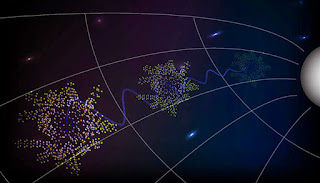Topics: Modern Physics, Quantum Mechanics, Schrödinger Wave Equation, Superposition
Why do we not see everyday objects in quantum superpositions? The answer to that long-standing question may partly lie with gravity. So says a group of physicists in Austria, which has shown theoretically that a feature of Einstein's general relativity, known as time dilation, can render quantum states classical. The researchers say that even the Earth's puny gravitational field may be strong enough for the effect to be measurable in a laboratory within a few years.
Our daily experience suggests that there exists a fundamental boundary between the quantum and classical worlds. One way that physicists explain the transition between the two, is to say that quantum superposition states simply break down when a system exceeds a certain size or level of complexity – its wavefunction is said to "collapse" and the system becomes "decoherent."
An alternative explanation, in which quantum mechanics holds sway at all scales, posits that interactions with the environment bring different elements of an object's wavefunction out of phase, such that they no longer interfere with one another. Larger objects are subject to this decoherence more quickly than smaller ones because they have more constituent particles and, therefore, more complex wavefunctions.
Physics World: Does time dilation destroy quantum superposition?
Edwin Cartlidge, science writer in Rome

Comments